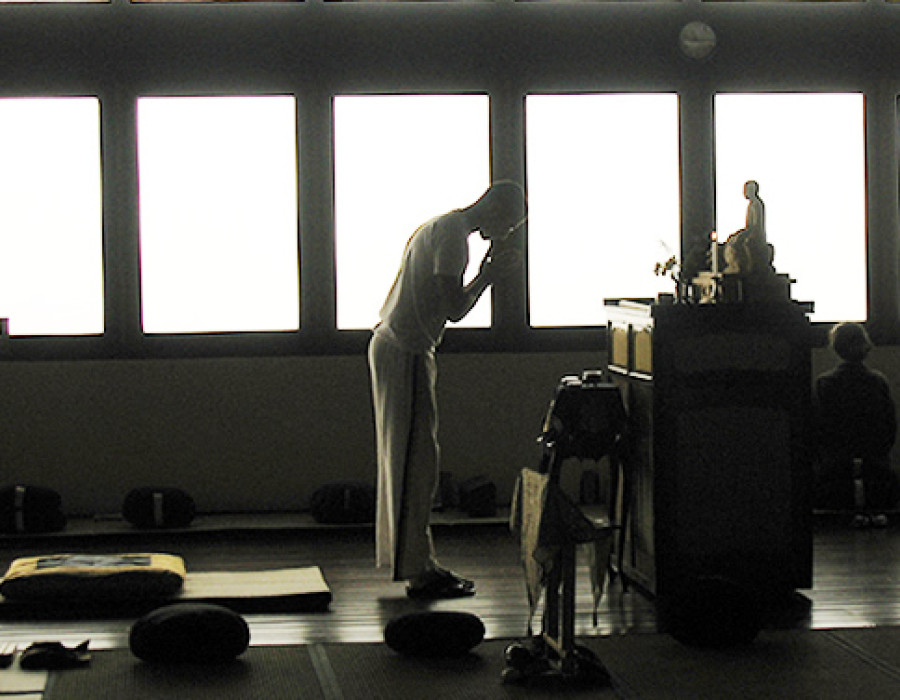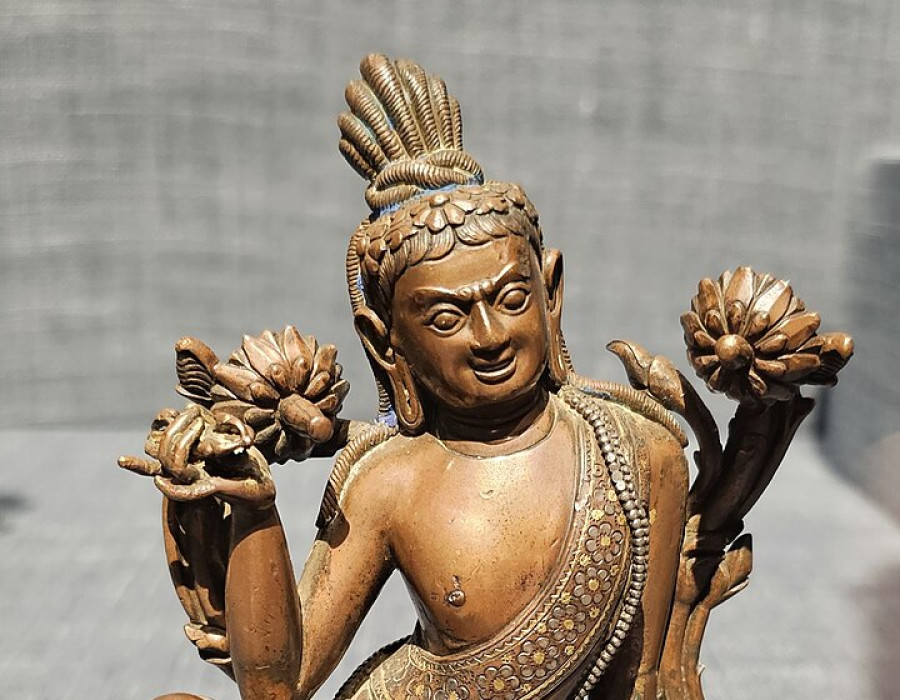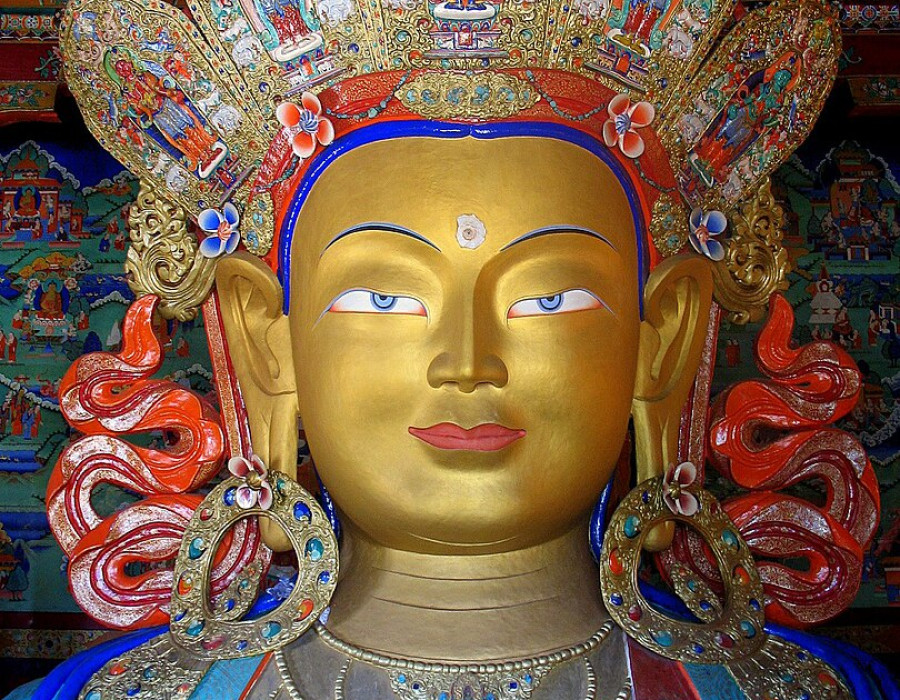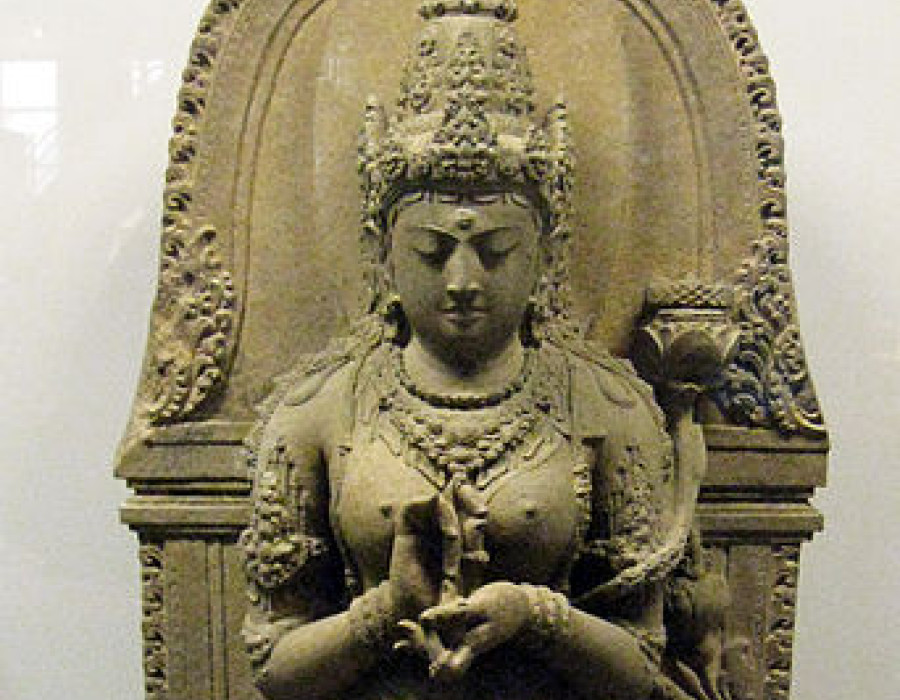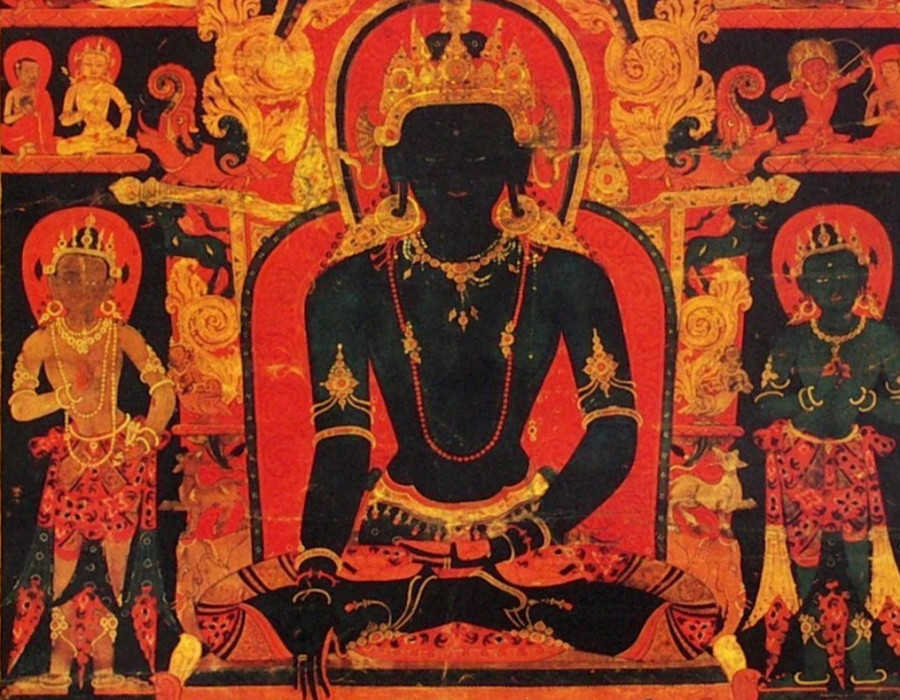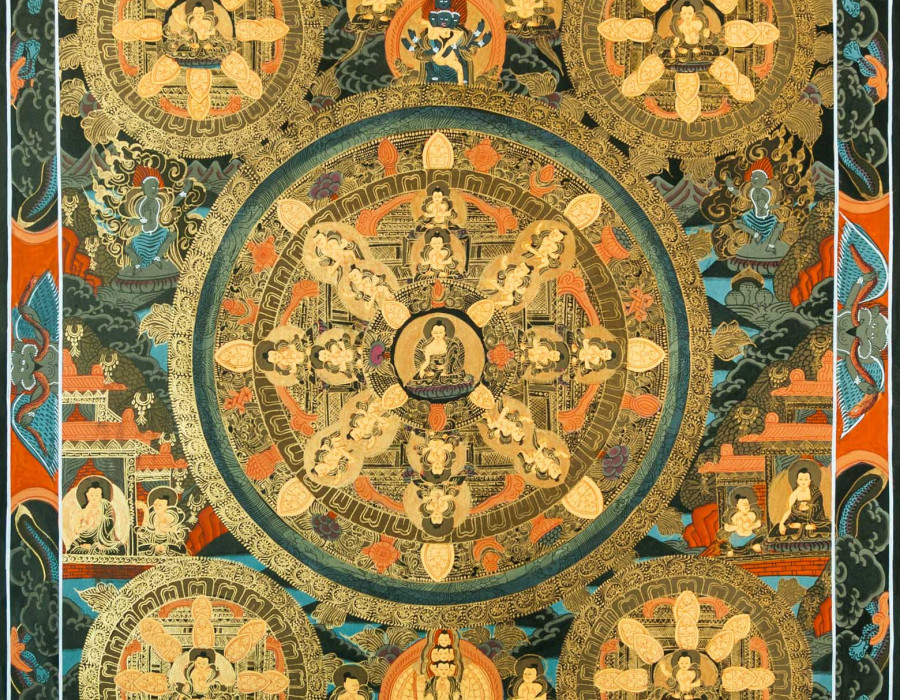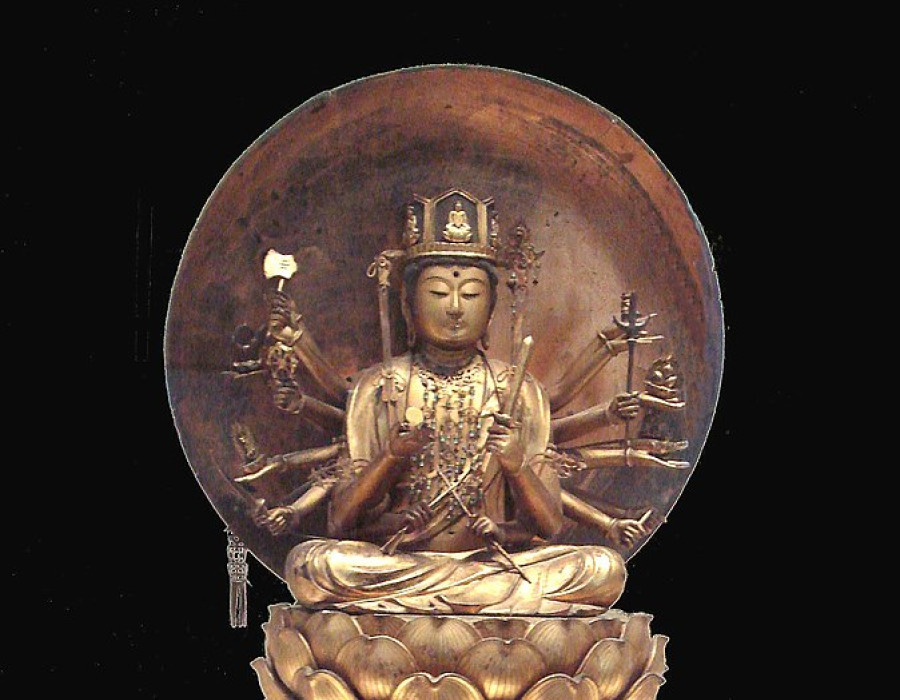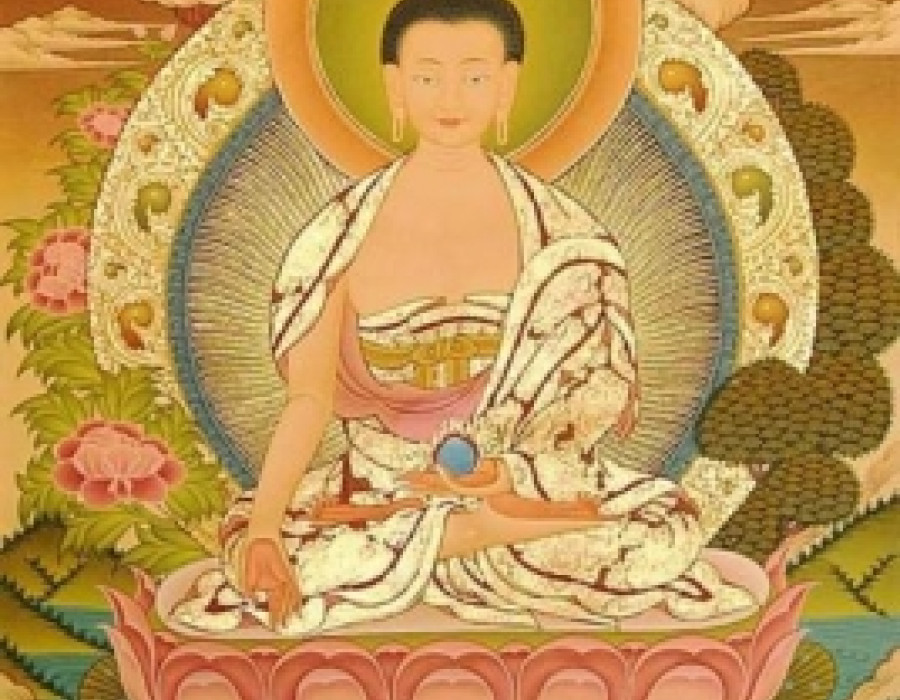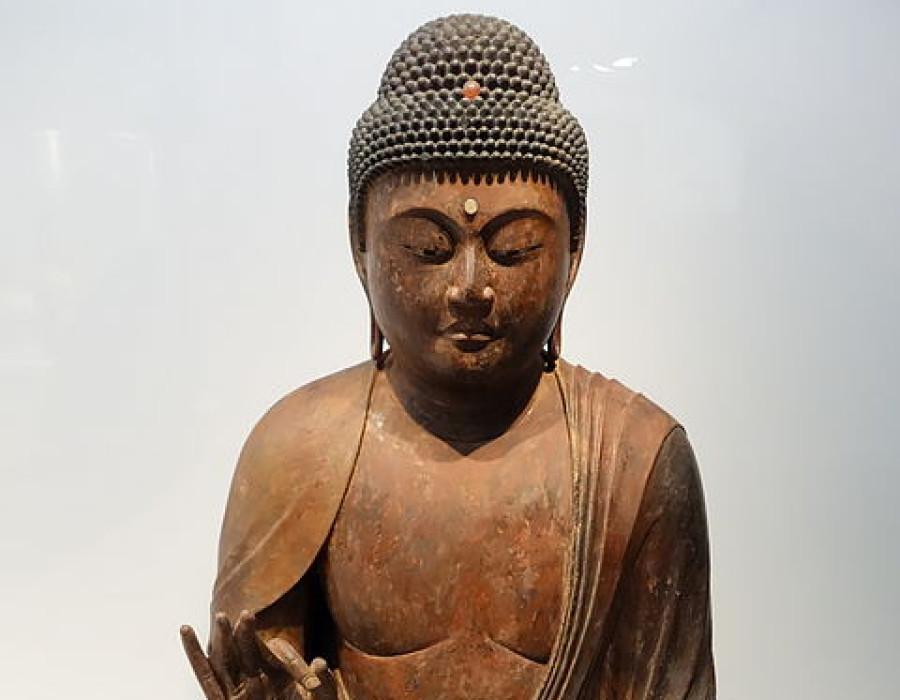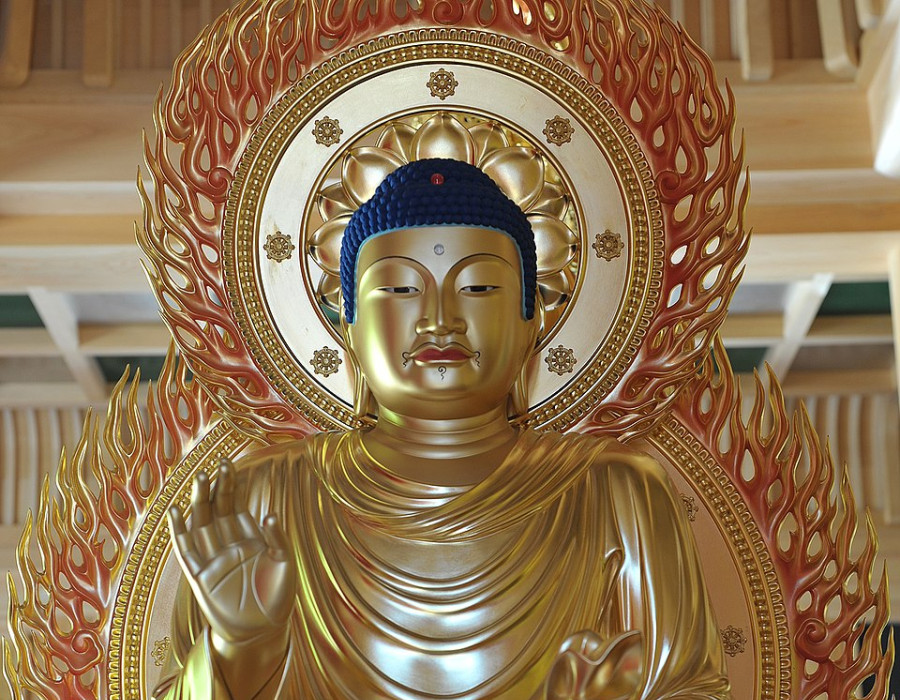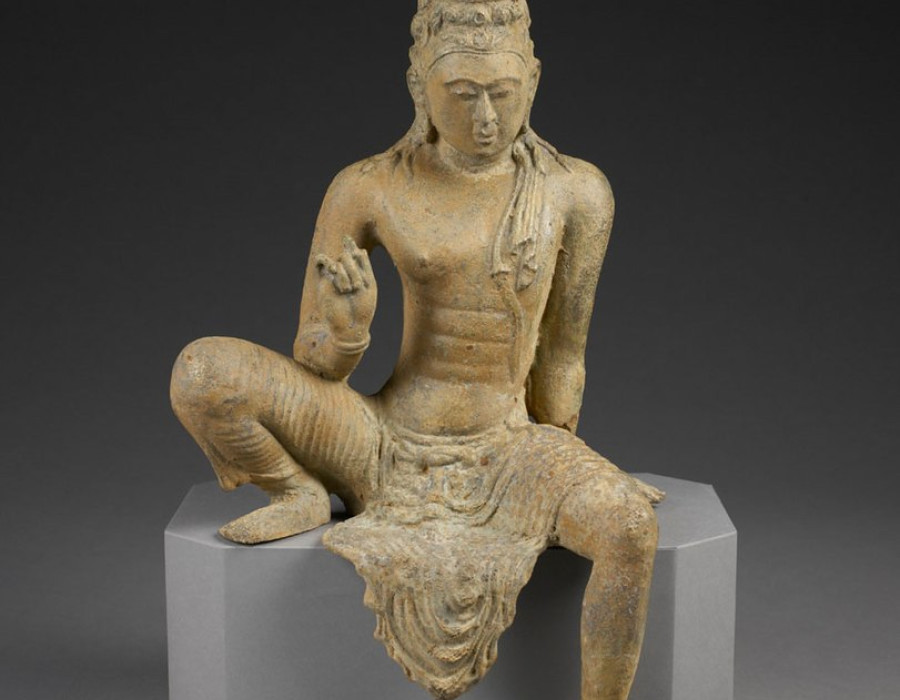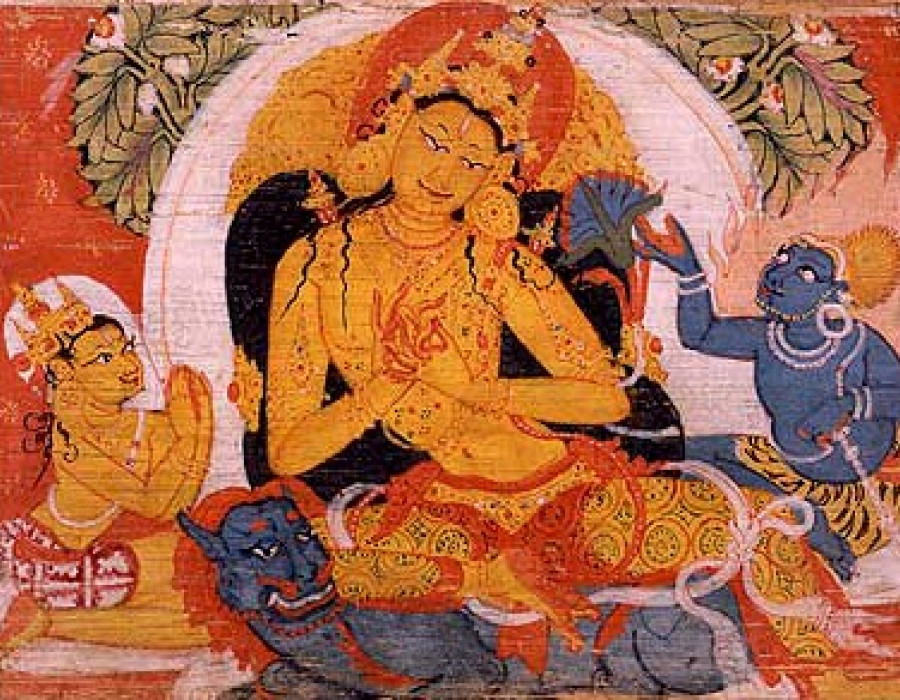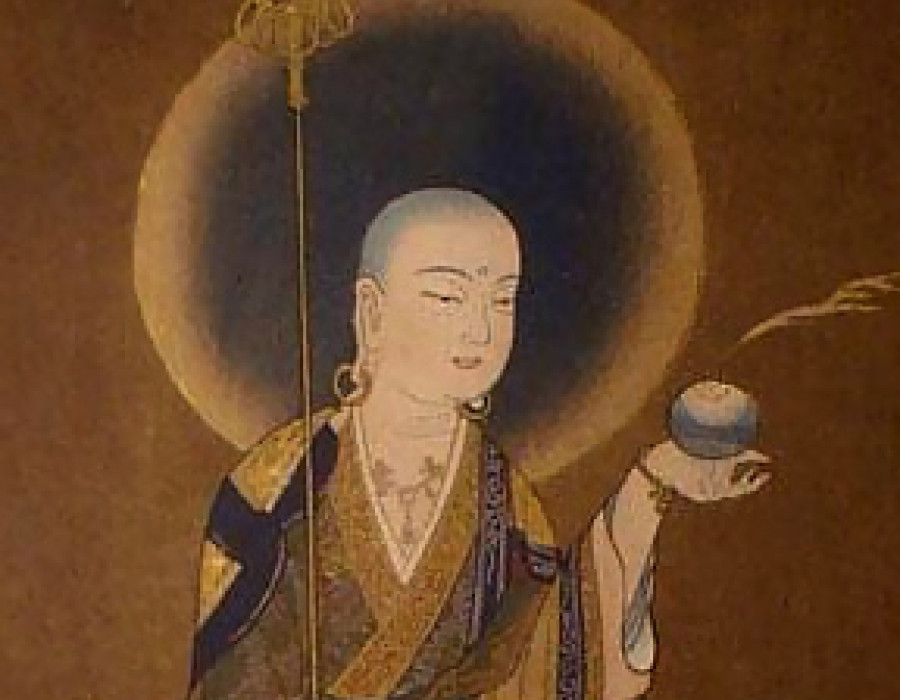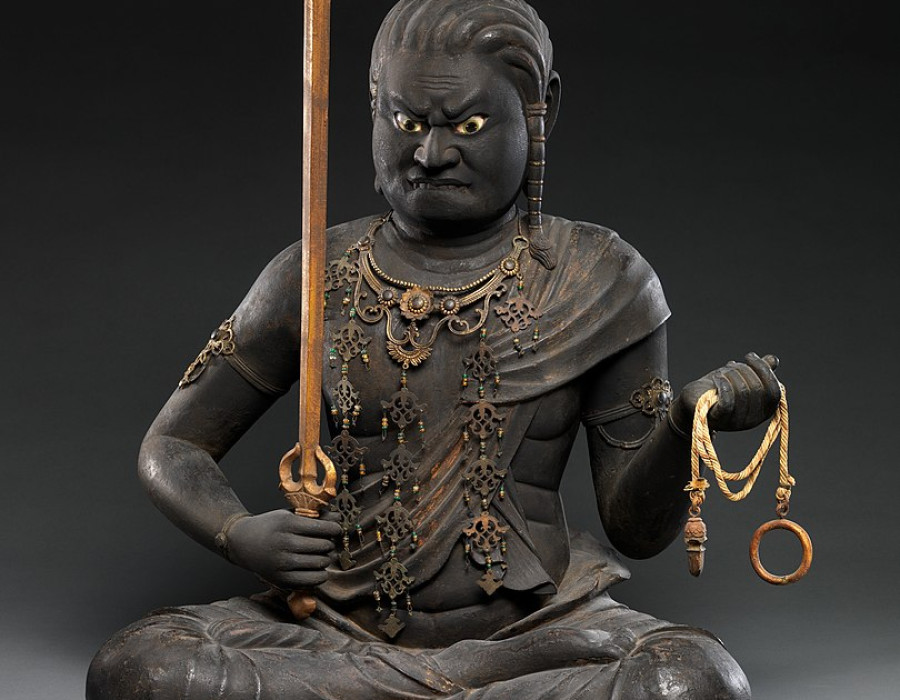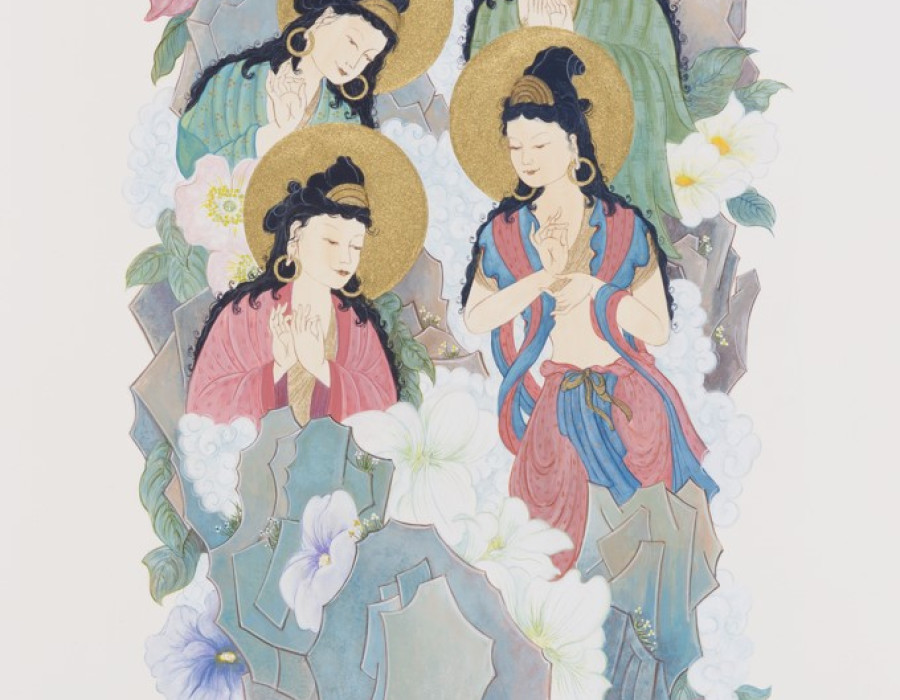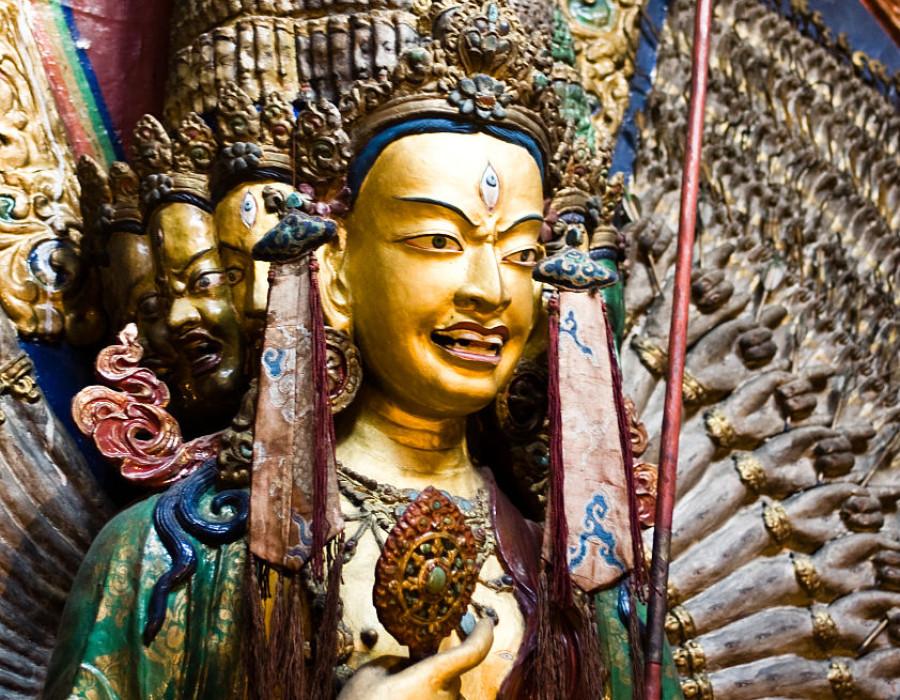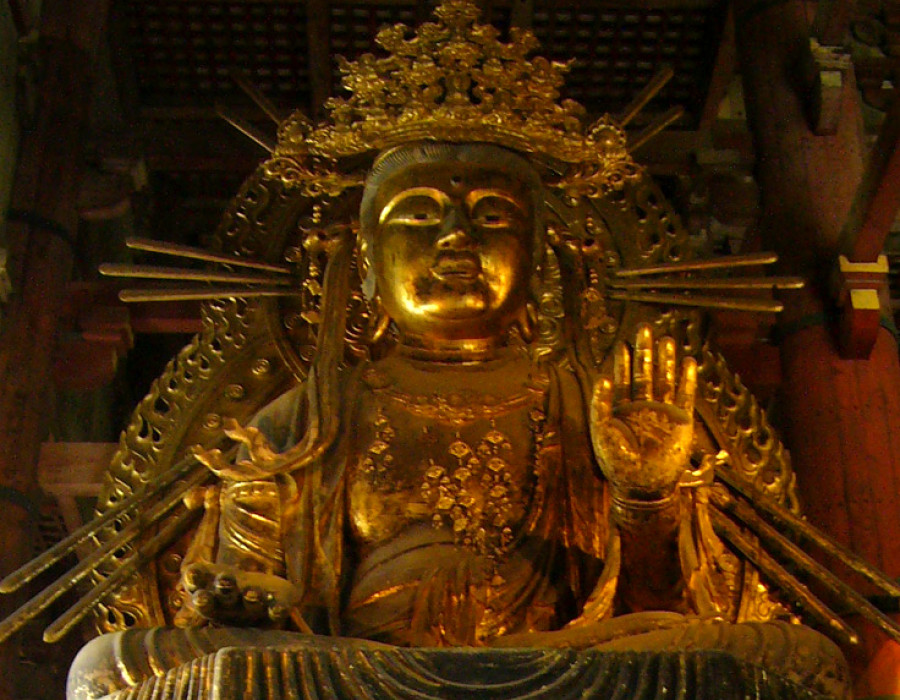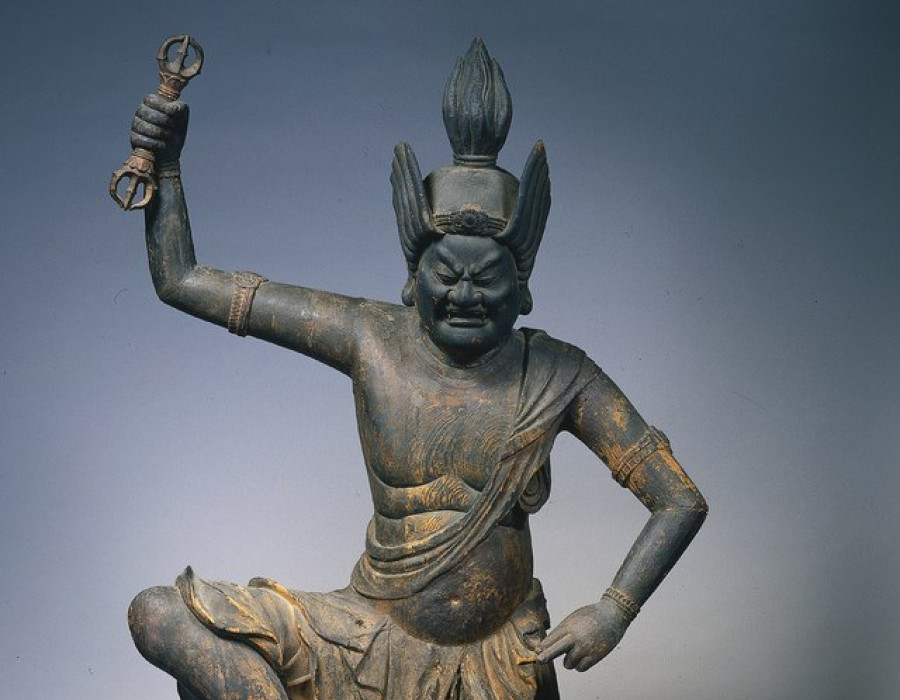
Martin Goodson
Fudō Myōō (Acala)
The Way of Devotion
'Wrathful' Deities may seem at odds with Buddhist values but as the saying goes, 'the passions are the Buddha nature; the Buddha nature is the passions’.

Statue of Fudō Myōō (Acala), from early 13th century (Kamakura period) Japan
By Creator:Kaikei - This file was donated to Wikimedia Commons as part of a project by the Metropolitan Museum of Art. See the Image and Data Resources Open Access Policy, CC0, https://commons.wikimedia.org/w/index.php?curid=57866902
Fudō Myōō is known as one of the Five Wisdom Kings, a servant and messenger of the Sun Buddha Vairocana who represents the reality of the Dharmakaya, the Supreme Body of The Buddha.
His representation shows a fierce figure holding aloft a sword and a noose. The sword is the sword of wisdom which links him to Bodhisattva Mañjuśhrī ,who teaches the Wisdom-Gone-Beyond sutras, and whose sword cuts through the bonds of ignorance (avidya). In his other hand, Fudō Myōō holds a noose. This reminds us of the image of the herdsman who holds the wild HeartBull ,in the ten pictures known as ‘The Bull and his Herdsman’ in the Zen tradition.
 ©
© By Commission impériale du Japon à l'Exposition universelle de Paris, 1900. - Histoire de l'art du Japon (1900), Public Domain, https://commons.wikimedia.org/w/index.php?curid=18830910
His main function is as a protector and ritually he is called upon to protect practitioners, pilgrims and, in Japan, the nation.
His body is black, a common colour for the wrathful manifestations of Buddhas and Bodhisattvas. This aspect is emphasised by one of his other names, Caṇḍaroṣaṇa, which means ‘Violent Wrathful One’.
The presence of wrathful deities provides a contrast to the common image of the peaceful Buddha sitting under the Bodhi tree and may provide food for thought about why such a ‘wrathful’ being should be venerated?
It reminds us that in the Northern tradition of Mahayana there is the saying: ‘The passions are the Buddha nature; the Buddha nature is the passions’[. This is the same rootenergy which underpins the heartfires of greed, anger and delusion and which also form the basis for Wisdom and Compassion, the two aspects of the fully awakened Heart. It is also a reminder that we should not be taken in by the quiet images that we see in the meditation hall (Zendo) and Shrine Room. In the Zen training halls, the monks have to reconnect with that tremendous energy that lies in the human heart. The energetic sweeping, cooking, cleaning and gardening that takes place, accompanied by loud shouts and whacks during the formal sittings, all go to remind us that the Zen training is a serious pursuit.
 ©
© By Unknown author - https://www.hermitagemuseum.org/wps/portal/hermitage/digital-collection/25.+archaeological+artifacts/477178, Public Domain, https://commons.wikimedia.org/w/index.php?curid=79281819
The root of Zen training is ‘wholeheartedness’, and it is this wholeheartedness that releases such power. Zen Master Daie said that our hearts and minds are ‘leaky’, in as much as we fritter this energy away in pursuing what ‘I’ want and what ‘I’ don’t like, spinning webs in which I get myself entangled. This depletes the energy, produces confusion in ordinary life and leads to a half-hearted way of living. All this has to be cut off with that powerful sword, and the wily heart restrained by that powerful noose. It is this that provides the protection. As the Buddha says in the Dhammapada:
The Heart is very hard to perceive, extremely subtle, flits wherever it listeth. Let the wise person guard it; a guarded heart is conducive to happiness. (D36)
The severe life of the monk squashes these escape routes by narrowing down all his ‘wants’ to two things - food and sleep. Over time, the old habit of chasing after distractions is attenuated, and there is a focus towards the heart which now manifests. Even though the root of ‘I’ goes deep, once this focus is established, it does not take much to pull in the reins when the heart drifts off once more.
 ©
© By Katsushika Hokusai - This file was donated to Wikimedia Commons as part of a project by the Metropolitan Museum of Art. See the Image and Data Resources Open Access Policy, CC0, https://commons.wikimedia.org/w/index.php?curid=57382072
Master Daiyu said that when she was in Japan, she learned this skill and developed a sklilful means with which to develop this focus.
In those days, she always kept at home a small pile of socks that needed darning.Whenever she found herself upset or annoyed by something, she would thread a needle and set to work on them. As she explained, she picked this task particularly since she ‘hated’ sewing and since she was in a bad mood anyway she may as well just get on with it. She would smile telling this story, adding - “Nothing sews as well as a fighting demon!”
What task would you choose to set your own fighting demon or god to do?
The Buddha set wrathful deities at the gates of temples and monasteries to protect the Dharma. In this way, this energy is no longer seen as ‘evil’, but compassionately set to work in a place where it may be of service to the situation and to other beings.
 ©
© By Dokudami - Own work, CC BY-SA 4.0, https://commons.wikimedia.org/w/index.php?curid=34132878
Fudō Myōō’s mantra is:
Namaku samanda basaranan senda makaroshana sowataya un tarata kan man
(Homage to all Tathāgatas, the omnipresent doors, who are in all directions! traṭ. O violent one of great wrath! khaṃ. Root out, root out every obstacle! hūm traṭ hām mām.)

